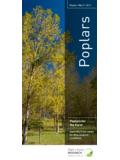Transcription of Giant Willow Aphid - Poplar and Willow
1 Fact Sheet Giant Willow Aphid Giant Willow Aphid (photo Matilda Collins) Giant Willow Aphid , tuberolachnus salignus was first sighted and reported in December, 2013 from Auckland. This Aphid has now throughout New Zealand. Identifying features It is a very large Aphid with a body length of 5-6 mm. willows are its only recognised host plant. Wingless individuals are mid-brown to dark brown with several rows of black skin patches . The antennae are less than half the body length. Winged individuals (alates) have the forewing membrane unpigmented but the wing markings and costal margin are dark brown. Waving a hand over an Aphid colony prompts a collective lifting of the hind legs. Physical disturbance will quickly disperse the colony up and down the stem. Rubbing against an Aphid colony releases a red body stain. Photos (L) Kevin Cash (R) Life Cycle Adults give birth to miniature adults called nymphs.
2 Each adult alate (winged adult) is reported to produce nymphs on average. Maturation time for nymphs is 12-17 days. Both adult forms continue to survive post-breeding. Reproduction is parthenogenic. No males are known for this species. Winged Aphid (alate) (photo ) Their overwintering sites have yet to be determined. Some individuals overwintered on Willow stems. This behaviour was not typical. Aphids overwintering on Willow stem (photo Kevin Cash Taranaki Regional Council) Giant Willow Aphid taps into the sugar flow in the Willow stem and the pressure of sap through the Aphid produces the honey dew. Willow Hosts and effects Giant Willow Aphid colonises both tree and shrub willows . More information is needed on whether it favours any particular willows . Colonies prefer stems 1-2 cm in diameter. The Aphid has an adverse impact on the growth of the host trees and should be considered as a potential pest species in the context of Willow as a production crop.
3 Responses measured in the Willow plant are both quantitative and qualitative; 1 increase in photosynthetic rate, 2 increase in leaf N, 3 increase in tree water use, 4 reduction in shoot and root biomass, 5 reduction in growth in the following year. Identifying the presence of aphids Higher than normal numbers of wasps are likely indicators of Aphid infestation as are sticky wet patches under Willow trees. Controlling the pest Chemical control using insecticides is successful, but this has consequences for beneficial insects and is not feasible in most situations. Limited predation by ladybirds has been observed. Ladybird feeding on Giant Willow Aphid (photo Wayne Teal Northland Regional Council) No other predators or parasitic wasps have yet been observed to attack Aphid colonies. Potential bio-control agents are known. However the economic costs of the pest need to be determined before bio-control becomes a viable option.
4 In future, some bird species may prove useful predators of this Aphid . Future impact of the Aphid Persistent annual colonisation of willows is expected to limit tree growth and general health. Harvesting of the honey dew by bees changes the characteristics of the honey, in particular, raising its melting temperature. Willow with heavy Aphid infestation (photo Wayne Teal) A warmer summer climate predicted from climate change scenarios will likely increase the reproductive rate and shorten the life cycle for the Giant Willow Aphid . Population size and pest status can be expected to increase in future.



